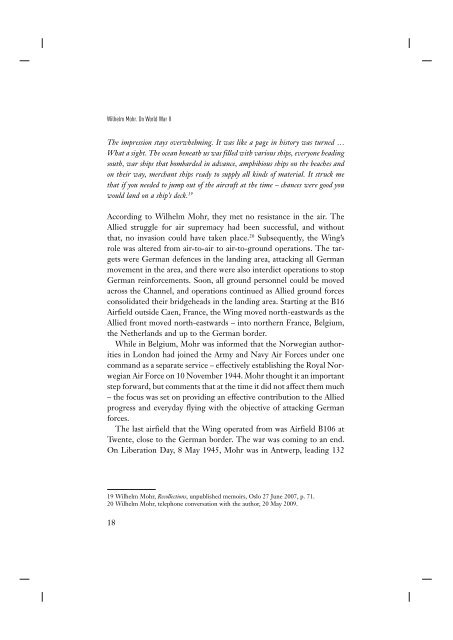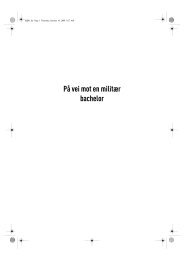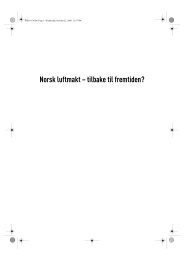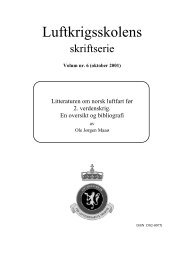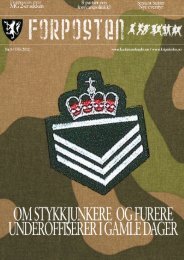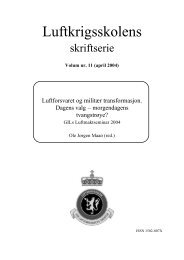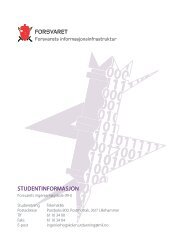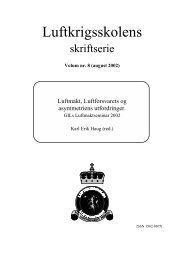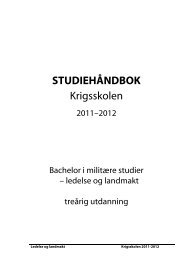Wilhelm Mohr
Wilhelm Mohr
Wilhelm Mohr
You also want an ePaper? Increase the reach of your titles
YUMPU automatically turns print PDFs into web optimized ePapers that Google loves.
<strong>Wilhelm</strong> <strong>Mohr</strong>. On World War II<br />
The impression stays overwhelming. It was like a page in history was turned …<br />
What a sight. The ocean beneath us was filled with various ships, everyone heading<br />
south, war ships that bombarded in advance, amphibious ships on the beaches and<br />
on their way, merchant ships ready to supply all kinds of material. It struck me<br />
that if you needed to jump out of the aircraft at the time – chances were good you<br />
would land on a ship’s deck. 19<br />
According to <strong>Wilhelm</strong> <strong>Mohr</strong>, they met no resistance in the air. The<br />
Allied struggle for air supremacy had been successful, and without<br />
that, no invasion could have taken place. 20 Subsequently, the Wing’s<br />
role was altered from air-to-air to air-to-ground operations. The targets<br />
were German defences in the landing area, attacking all German<br />
movement in the area, and there were also interdict operations to stop<br />
German reinforcements. Soon, all ground personnel could be moved<br />
across the Channel, and operations continued as Allied ground forces<br />
consolidated their bridgeheads in the landing area. Starting at the B16<br />
Airfield outside Caen, France, the Wing moved north-eastwards as the<br />
Allied front moved north-eastwards – into northern France, Belgium,<br />
the Netherlands and up to the German border.<br />
While in Belgium, <strong>Mohr</strong> was informed that the Norwegian authorities<br />
in London had joined the Army and Navy Air Forces under one<br />
command as a separate service – effectively establishing the Royal Norwegian<br />
Air Force on 10 November 1944. <strong>Mohr</strong> thought it an important<br />
step forward, but comments that at the time it did not affect them much<br />
– the focus was set on providing an effective contribution to the Allied<br />
progress and everyday flying with the objective of attacking German<br />
forces.<br />
The last airfield that the Wing operated from was Airfield B106 at<br />
Twente, close to the German border. The war was coming to an end.<br />
On Liberation Day, 8 May 1945, <strong>Mohr</strong> was in Antwerp, leading 132<br />
19 <strong>Wilhelm</strong> <strong>Mohr</strong>, Recollections, unpublished memoirs, Oslo 27 June 2007, p. 71.<br />
20 <strong>Wilhelm</strong> <strong>Mohr</strong>, telephone conversation with the author, 20 May 2009.<br />
18


